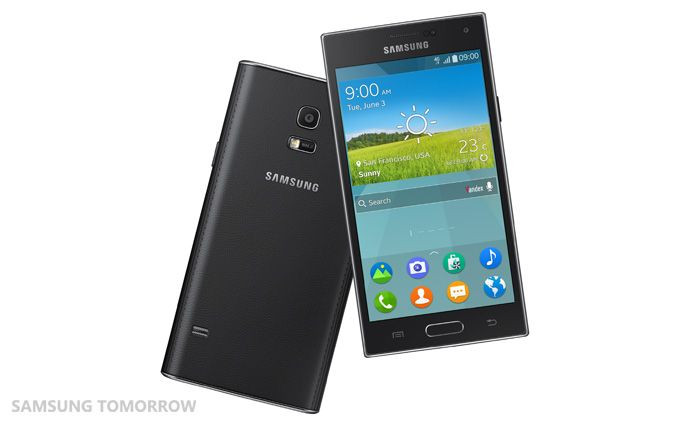Tizen OS: Samsung’s First Step To Branching Out On Its Own

In a smartphone market dominated by Android and iOS, the little-known Tizen operating system by Samsung Electronics Co. (KRX:005930) may start to get more attention now that it has been introduced on a new Samsung smartphone.
Rumors about a Tizen-operated smartphone preceded an actual device by more than two years. The operating system was being painstakingly developed behind the scenes while Samsung continued to release devices powered by the Android operating system.
“Samsung realized hardware innovation is slowing and [becoming] increasingly difficult, so they need to take control of software innovation and differentiation options, to retain a strong place in the value chain,” Nick Spencer, senior practice director at ABI Research, told International Business Times.
The Tizen operating system is based on the Linux kernel, which are the most basic command codes that can be built upon to create software. As an open-source code, the Linux kernel, and subsequently the Tizen operating system, are available for programmers to access and use for free to develop their own applications and other software. Being a developer-friendly operating system will likely be a driving point for Tizen.
Samsung released its first Tizen-powered devices, the Samsung Gear 2, Samsung Gear Fit and Samsung Gear 2 Neo smartwatches, in April. The just-announced Samsung Z is the Korean manufacturer’s first smartphone to run the Tizen operating system. The Samsung Z runs the Tizen 2.2.1 platform version, which, Forbes notes, shows Samsung’s dedication to releasing a seamless and functional operating system.
According to Samsung, Tizen focuses on “optimal performance” and “improved memory management.” Though the system does bear a visual similarity to the Android operating system because Samsung has implemented elements of its own TouchWiz user interface into Tizen. One large difference between Tizen and Android is that Tizen will not have access to the Google Play Store. Samsung has likely included its own app store on the Samsung Z and other Tizen-powered devices.
The implementation of Tizen could usher in a make-or-break period for Samsung. Google’s (NASDAQ: GOOG) Android and Apple’s (NASDAQ: AAPL) iOS are currently the two most widely adopted mobile operating systems across the market, which tends to be unforgiving to new players. Notably, the Samsung Z will be introduced in Russia sometime in the third quarter before moving on to other markets. Carriers such as the China’s ZTE and Japan’s NTT DoCoMo and SoftBank Mobile are among the foreign mobile networks, which have long pledged support to Tizen. Plans for a release in the U.S. are not yet known, but Spencer believes Tizen smartphones such as the Samsung Z likely won’t be introduced to the U.S. market until the system has a repertoire of applications that can compete with Android and iOS.
In the midst of preparing for Tizen’s commercial debut, Samsung has also made moves to strengthen its relationship with Google. The two announced a cross-patent deal in January, which is largely expected to strengthen both companies’ legal standing against rivals. But it could also be a part of Samsung’s plan to branch out on its own while keeping its access to Android as a backup. Consumers should be able to rely on the likelihood that Samsung and Google won’t completely cut ties with one another.
“With many corporate relationships, commercial realities mean both will continue to work with each other on Android as they can’t afford not to,” Spenser said.
Though Samsung is currently pushing for Tizen development, the system’s ultimate success will depend on consumer response. Spenser believes if the operating system takes off Samsung will make a clear differentiation between Tizen-powered and Android-powered devices by way of profit margins. Samsung may likely focus its innovation on Tizen and then make their high-end devices Tizen-powered; in turn, Android-powered devices may be used for low-end and low-margin Samsung devices.
© Copyright IBTimes 2024. All rights reserved.





















